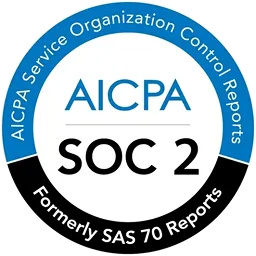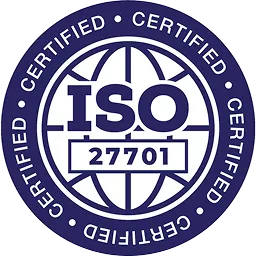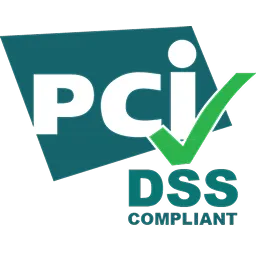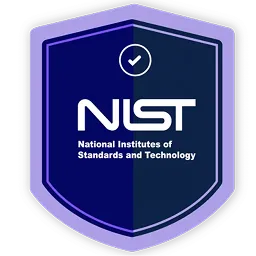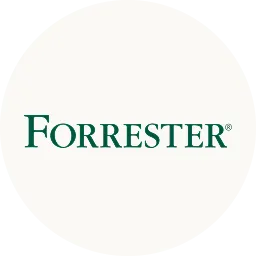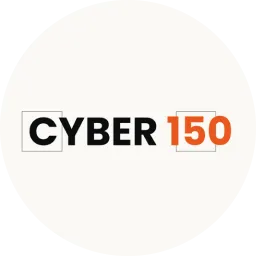Navigating the complexities of SaaS agreements demands precision, so we've crafted a thorough SaaS agreement checklist. This checklist encompasses critical aspects such as subscription pricing, intellectual property, and regulatory compliance. It ensures no vital detail is missed during contract closures or renewals.
However, let’s delve into the specifics and establish a robust foundation for our exploration.
SaaS has revolutionized how IT managers and teams access, use, and benefit from applications. SaaS has become an integral part of modern workflows, from project management tools to customer relationship management systems. However, this convenience and efficiency come with an alarm - the necessity for well-defined SaaS agreements.
So, what exactly is a SaaS agreement?
What is a SaaS agreement?
A SaaS agreement is a legally binding contract between a software provider (vendor) and a customer (organization or individual). This agreement outlines the terms and conditions governing the use of the software delivered over the Internet.
The SaaS contract typically includes details about subscription terms, pricing, service level commitments, data security, intellectual property rights, and other essential aspects of the service.
SaaS agreements clarify the rights and responsibilities of both parties, ensuring a clear understanding of the services being provided and the customer's expectations.
Let’s check out the SaaS agreement checklist for optimal operational efficiency.
Zluri Recognized as a Leader in the 2024 Gartner® Magic Quadrant™ for SaaS Management Platforms.
SaaS Agreement Checklist: 10 Things to Review in Every SaaS Contract
By thoroughly examining these aspects in your SaaS agreement checklist, you can enhance operational efficiency and ensure a smooth, secure, and compliant usage of the software service.
1. Agreement Dates
- Checking the Start Date:
It is crucial to confirm the exact date when the agreement and all its clauses become officially active. This start date should align precisely with the day your team intends to commence using the SaaS application.
Ensuring synchronization between the agreement's activation and your team's usage initiation is fundamental for a seamless transition into the new system.
- Confirming the End Date:
The 'end date' refers to the termination date of the existing agreement. This date holds significant importance for procurement teams, as it marks the endpoint of the current contract.
Being mindful of this date is essential, especially for procurement teams, as it provides a clear timeline for negotiating contract terms during the renewal process. Awareness of the end date ensures that there are no interruptions in service and aids in strategic planning for future software needs.
- Understanding Notification Timelines for Renewals:
One of the critical aspects of SaaS agreement checklist is the notification timelines for renewals. This clause outlines the duration within which software providers must inform your organization about the impending end of the subscription period. Receiving timely notifications is vital, as it allows your company ample time to decide whether to renew or terminate the subscription.
As per industry standards, vendors must typically send a subscription notification at least 30 days before the 'end date.' This period allows your organization to evaluate the software's performance, assess its relevance to current business needs, and make informed decisions about renewal.
It's important to note that these notification timelines can often be customized based on the specific data and processes involved in your organization.
By being vigilant about start and end dates and understanding the notification timelines for renewals, your organization can effectively manage its SaaS subscriptions, ensuring uninterrupted services and optimizing costs.
2. Review Access Rights and Users
Access rights and user limitations are indispensable components of any robust SaaS agreement, a pivotal section of a comprehensive SaaS agreement checklist. These agreements outline the specific number of users allowed under a designated plan.
Typically, basic plans provide single-user licenses, meaning only one individual can access the software under that license. Recognizing and strictly adhering to these limitations is paramount. Failing to do so can lead to accidental breaches and unexpected expenses. It is imperative for organizations to meticulously evaluate their user requirements in alignment with the constraints delineated in the agreement.
For enterprises boasting extensive teams, exploring alternatives such as enterprise plans or customized agreements emerges as a strategic maneuver. Vendors often offer discounts for such scenarios, making it economically viable for departments requiring multiple user accesses.
A profound awareness of the repercussions of exceeding user limits or violating usage policies is critical. Non-compliance can result in financial penalties, temporary suspension of services, or, in severe cases, contract termination. Understanding these consequences is fundamental to ensuring a seamless and uninterrupted service.
Moreover, comprehending the nuances of user limitations empowers businesses with negotiation leverage. With this knowledge, organizations can secure agreements tailored to their precise requirements and crafted for future scalability. This proactive approach facilitates a seamless integration of the SaaS solution and fosters a mutually beneficial partnership, ensuring the software aligns seamlessly with the evolving needs of the business.
Also Read: If you want to know more about access review, you can walk through What is user access review
3. Evaluate Customer Support & Service Policies
When considering a SaaS application, the significance of robust customer support cannot be overstated. It's vital for a smooth user experience and becomes pivotal during unforeseen app downtimes.
Before committing to any SaaS solution, a meticulous examination of their customer support and service policies is indispensable. Each company may differ in their approach; some offer support via phone, while others provide round-the-clock assistance through email. Understanding these nuances is vital.
The negotiation phase of a SaaS agreement is where the customer service provisions come under scrutiny.
Key evaluation factors include the method through which support will be delivered and the typical response time. Response time gains paramount importance, especially when time zones vary between your location and the company's headquarters.
Ensuring that the SaaS vendor guarantees support and offers comprehensive onboarding and technical assistance is imperative. These aspects should be explicitly outlined in the SaaS agreement, or you can request their inclusion in the pricing structure.
4. Scrutinize Data Ownership and Usage Clarity Clauses
Data ownership's legal gravity demands a discerning eye when entering into SaaS agreements. Scrutinize these agreements meticulously to understand precisely how data is collected and managed by the SaaS vendor.
Data ownership can often be obscured behind vague clauses and superficial information. Companies may present surface-level information while concealing critical clauses. In this scenario, astute vigilance is paramount. A thorough and discerning review of the agreements is essential to unearth hidden complexities and protect your data effectively.
Beyond ownership, grasp how the vendor intends to utilize your data. You can restrict data usage, especially for sensitive information like patents, source codes, trade secrets, and customer data.
5. Master Renewal Notice Period Nuances
The renewal phase is critical to the SaaS agreement checklist, which is often filled with management hurdles. To navigate these challenges, clarity is imperative. SaaS vendors must clearly define the notice period and set a definite deadline, protecting subscribers from accidental auto-renewals.
In this context, subscribers hold a pivotal position. If they choose not to renew, prompt communication becomes essential. For example, in the case of a 30-day notice period specified in the SaaS contract, users must swiftly inform the vendor within this timeframe to confirm their renewal decisions.
To streamline this process to perfection:
- Mastering Notice Period Nuances: A deep understanding of notice periods is foundational. It empowers both vendors and subscribers, ensuring unwavering commitment to contractual obligations.
- Centralized Management for Pristine Precision: Implementing a centralized management system is imperative. This approach eradicates the risk of inadvertent auto-renewals, entrusting control to both parties and minimizing potential discrepancies.
- Strategic Negotiations for Extended Notice Periods: Engaging in negotiations for extended notice periods is not just prudent; it’s a strategic imperative. This foresight enables meticulous planning and harmonizing business strategies with subscription commitments.
Also Read: If you want to know more about managing renewals, you can read How to manage SaaS renewals
6. Monitor Actual Total SaaS Contract Value
One of the fundamental steps in managing SaaS contracts is to monitor your actual expenditures diligently. Regularly comparing these expenditures with the contracted amounts allows you to stay within your budgetary limits. This proactive approach helps prevent overspending and ensures that your financial resources are utilized optimally.
Billing discrepancies can occur for various reasons, ranging from usage fluctuations to incorrect billing rates. It's essential to investigate and understand these discrepancies actively. By identifying the root causes, you can rectify errors promptly, maintain accurate financial records, and make informed decisions based on reliable data.
Embracing specialized SaaS spend management tools is instrumental in optimizing your contracts. These tools offer many features, including real-time expense tracking, detailed cost analysis, and predictive insights.
By leveraging the capabilities of these tools, you gain comprehensive visibility into your SaaS usage patterns. This visibility empowers you to identify potential cost-saving opportunities, allocate resources efficiently, and enhance overall operational productivity.
7. Scrutinize Service Level Agreement (SLA) Provisions
Service Level Agreements (SLAs) are pivotal components of a SaaS agreement checklist, demanding scrutiny when subscribing to a new service. Typically, these agreements encompass a detailed SLA section outlining the vendor's obligations, including performance benchmarks and usability criteria.
One of the most advantageous aspects of SLA practices is enforceability. Vendors are obligated to meet the stipulated requirements. For instance, a common commitment in SaaS agreements is a 99% uptime guarantee. If the vendor fails to fulfill this commitment, you have the grounds to hold them accountable, provided it is explicitly stated in the SLA.
In case you encounter frequent service disruptions or sluggish performance, you have the right to report these issues to the company. The vendor is then obliged to exert reasonable efforts to resolve these problems, ensuring a seamless user experience promptly.
The response time clause within the SLA is of paramount importance, as it delineates the vendor's commitment to resolving issues within a specified timeframe. This clause holds particular significance if your operations rely significantly on the SaaS service, underscoring the critical nature of prompt issue resolution in the digital landscape.
8. Review Consumption Metrics & Billing Charges
In a SaaS agreement checklist, consumption metrics refer to the parameters used to measure how you use an application. This clause is crucial, as it determines how the vendor will bill you during contract renewals. The vendor might charge you per user or per usage based on how your users utilize the application.
Harness the power of specialized tools like CloudEagle to monitor your consumption metrics. These platforms provide invaluable insights into your usage patterns, enabling effective cost-optimization decisions. By tracking your consumption trends, you can identify areas for potential savings, enhancing your financial efficiency.
Before committing to a SaaS subscription, clarity on billing charges is paramount. Thoroughly review and comprehend the terms related to consumption metrics and billing units. Ensure that these charges are explicitly defined and easily understandable. Transparent communication at this stage prevents unexpected expenses and enables better financial planning.
9. Ensuring Data Security in Your SaaS Agreement
Data protection is a paramount element of a SaaS agreement checklist. Vendors depend on strict regulatory compliance to handle personal data, including GDPR, CCPA, PCI DSS, and SOC II. Understanding how your vendor stores, manages, and uses this data is essential. A secure process is crucial, and buyers rightfully demand vendors capable of safeguarding sensitive information.
Before signing the contract, confirming that the vendor's product aligns with the latest security and compliance regulations is imperative. Look for tangible proof, such as compliance certifications, to validate their adherence to industry standards.
If your region or industry necessitates specific compliance, ensure the SaaS vendor meets these exclusive jurisdiction requirements. While scrutinizing the SaaS contract, verify that it clearly outlines all relevant information per applicable laws. A comprehensive and clear agreement is essential for legal compliance and forms the basis of a robust and secure partnership.
10. Understand Termination Policies & Penalties
One of the foremost considerations in a termination policy revolves around early termination penalties. These penalties serve as a safeguard mechanism for both parties involved, ensuring that there are financial consequences if either party decides to end the contract prematurely.
By grasping these penalties, your teams can assess the potential costs involved, allowing for informed decisions regarding contract termination.
Notice periods and auto-renewal conditions are crucial components of a termination policy. Notice periods stipulate the duration within which either party must inform the other about their intention to terminate the contract. This advance notice facilitates preparation and prevents abrupt disruptions.
Similarly, understanding auto-renewal conditions helps avoid unintentional renewals, ensuring that contracts are extended only if mutually agreed upon.
In today's data-centric landscape, effective management of information is vital. When terminating a contract, it is essential to outline clear procedures for data migration from the existing service provider's systems to the new one.
Additionally, specifying data retention policies post-termination is imperative. This involves determining how long data will be retained and outlining security measures to safeguard sensitive information during this period.Click here to download our Free SaaS agreement checklist.
Also Read: If interested in negotiation, you can go through How to negotiate SaaS contracts?
Unlocking Effective SaaS Negotiation Strategies with Zluri
Navigating SaaS app acquisition can be daunting; the complexities of vendor agreements and opaque pricing models often leave buyers perplexed, striving to secure the best SaaS solution at the right price. Enter Zluri, an intelligent SaaS management platform, your partner in SaaS agreements.
Consider a scenario where your organization needs a new project management SaaS tool. You've negotiated with a vendor, but their pricing structure seems ambiguous. They've quoted a price based on the number of users, but you're unsure if this is a fair rate or if it aligns with industry standards. This lack of transparency makes the negotiation process challenging, and you're concerned about overpaying.
This is where Zluri steps in. For buyers dealing with enterprise-level SaaS vendors, who frequently withhold critical pricing information, Zluri acts as a beacon of clarity.
From the third-person perspective, it becomes evident that SaaS vendors commonly maintain opacity in their pricing models, citing variables such as user counts and required features as determining factors. This lack of transparency creates a daunting landscape for organizations seeking the best SaaS solutions at reasonable prices.
Here's a closer look at how Zluri's expertise and data-driven insights redefine successful procurement SaaS negotiations:
Elevate Your SaaS Procurement Experience with Zluri’s Strategic Negotiation Expertise
Zluri offers bespoke negotiation strategies that transform complexities into opportunities in SaaS procurement, where pitfalls are rife. Discover how its strategic approach redefines the way you secure your SaaS solutions.
1. Precision in Overcoming Anchoring Pitfalls
Consider a scenario where your company wants to purchase a project management SaaS tool for your teams. You receive a quote from Vendor X, which seems reasonable at first glance. However, without realizing it, you have fallen prey to the anchoring effect, where the initial price quoted by Vendor X becomes the mental anchor point for your decision-making process.
With Zluri's precision in overcoming anchoring pitfalls, you can access comprehensive benchmark data on similar SaaS products in the market. Armed with this knowledge, you discover that Vendor X's initial pricing is significantly higher than the average market price for similar tools with comparable features and services.
Empowered by this precise benchmark data, you can now negotiate with Vendor X armed with facts. You can counter the vendor's offer with well-informed data, showcasing the genuine market value of the desired SaaS product. This not only helps avoid overpayment but also strengthens the negotiation position. With solid ground beneath, you can negotiate a more favorable deal, ultimately saving costs and ensuring they get the best value for their investment.
2. Strategic Mastery in the Zone of Possible Agreement (ZOPA)
As the procurement manager responsible for procuring office supplies for your company, you have conducted thorough research and analysis to pinpoint a prospective vendor renowned for its high-quality products. However, your budget limitations necessitate negotiating a favorable agreement within a predefined price range.
You employ the zone of possible agreement (ZOPA) approach in your negotiation meeting with the vendor. Leveraging Zluri’s expertise, you present data-backed insights that clearly define the mutually beneficial zone where your budget aligns with the vendor’s pricing range.

With this strategic approach, you negotiate a deal that meets your budget requirements and ensures that the vendor finds the agreement financially viable. By staying within the ZOPA, you establish a partnership built on trust and transparency, allowing both parties to achieve their goals.
This successful negotiation saves costs for your company and lays the foundation for a long-term, mutually advantageous relationship with the vendor.
3. Empowering Your BATNA Strategy
Procurement managers are pivotal in ensuring their companies make cost-effective and strategic purchasing decisions. Understanding and leveraging the concept of the best alternative to a negotiated agreement (BATNA) is crucial if you’re aiming for successful vendor negotiations and sustainable supplier relationships.

Consider a scenario where you are tasked with sourcing a new IT services provider for your company. Armed with the knowledge of BATNA, you assess the situation thoroughly and identify BATNA as the option to continue with the existing IT services provider, even though their services have become subpar and their pricing isn't competitive anymore.
Empowered by your BATNA strategy, you evaluate your options. In this case, your BATNA is to continue working with your current supplier, even though their prices are higher than Supplier B's. Armed with this knowledge, you confidently negotiate with Suppliers A and B.
During the negotiations, you discussed your concerns about their delivery reliability with Supplier A. Knowing that you have a viable alternative (your current supplier) allows you to push for better delivery terms without compromising the price. With Supplier B, you use your BATNA to negotiate a slightly lower price, emphasizing that their reliability aligns with your business needs, making their offer more appealing.
In the end, Supplier B agrees to a competitive price and offers a delivery schedule that meets your requirements. By understanding your BATNA, you safeguarded your interests and secured a reliable supplier, ensuring the success of your business operations.
See what our customers have to say about us:

Further, According to KuppingerCole's analysis, the Zluri helps you standardize SaaS procurement, track spending, and save money by subscribing only to necessary applications. Hence, it reduces time spent on market research and price negotiations.
By choosing Zluri, you're not just securing SaaS agreements but ensuring a future where your organization thrives. Seize the opportunity, book a demo, and embrace a new era of SaaS excellence with Zluri by your side.
Here are some Frequently Asked Questions for SaaS Contracts and Agreements
1. What is a SaaS Contract?
A SaaS contract is a pivotal legal agreement solidifying a software provider and customer partnership. This essential SaaS agreement clearly outlines the terms and conditions dictating the usage of a SaaS application, which is delivered via the Internet.
It delineates the rights, responsibilities, and mutual understandings between the parties involved in this digital collaboration.
2. What is a SaaS Contract Template?
A SaaS contract template defines a SaaS agreement's foundational structure and crucial stipulations. It presents a well-organized framework that can be adjusted and fine-tuned to suit the specific demands of software vendors and their clients.
This template acts as a flexible guide, allowing for customization while maintaining essential legal elements. It simplifies the process of creating individualized contracts, ensuring that they are clear, equitable, and legally sound for all stakeholders.
3. What are Service Level Agreements (SLAs) in a SaaS Contract?
Service Level Agreements (SLAs) within a SaaS contract are the contractual framework that defines the provider's commitments in terms of uptime, performance benchmarks, and responsive support. These SaaS agreements establish the standard of service quality that customers can expect.
If these commitments are not met, SLAs also specify the consequences, ensuring accountability and maintaining a seamless user experience. SLAs are pivotal in assuring the consistent and reliable delivery of services in the SaaS domain.






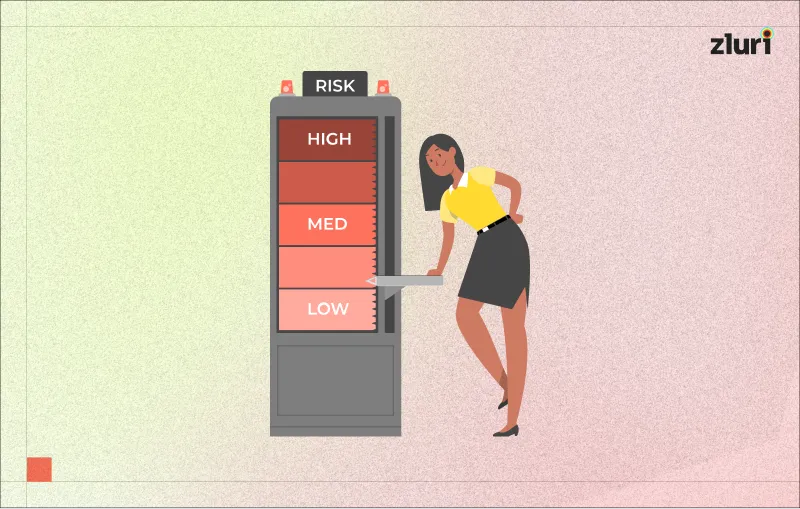


.svg)



